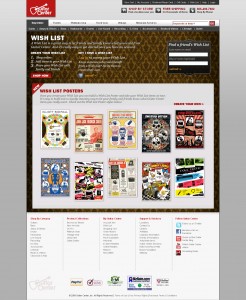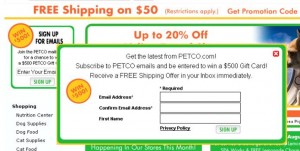Sharable Holiday Wish Lists
Marketers at multichannel music equipment retailer Guitar Center this week launched customizable wish lists to help customers steer friends and family toward their desired holiday gifts.
The lists are designed by professional concert poster artists to resemble posters from different musical genres, says Scott Archambault, Director, Customer Acquisition, Guitar Center.
Shoppers can browse, click to add products, and launch a browser-based Flash app to choose a design. Dragging-and-dropping automatically blends products with a design, and shoppers can add a title and an image to certain lists.
Shoppers can click to share lists on several social networks including Facebook, MySpace and Twitter.
The posters won’t appeal to everyone, and shoppers have the option to create and share a more traditional list, Archambault says.
Why offer sharable lists? Archambault says that gift shopping for musicians can be difficult due to the range of product choices and each player’s preferences.
“It’s not enough to just buy a guitar off the shelf,” he says.
The team created the effort with Organic of San Francisco and expects it to extend into next year. They later intend to drive custom marketing efforts based on the products customers select.
“If you have a lot of guitar instruments or something that maps toward an instrument preference, the emails that you get and the reminders that you get will speak to those very specifically.”










